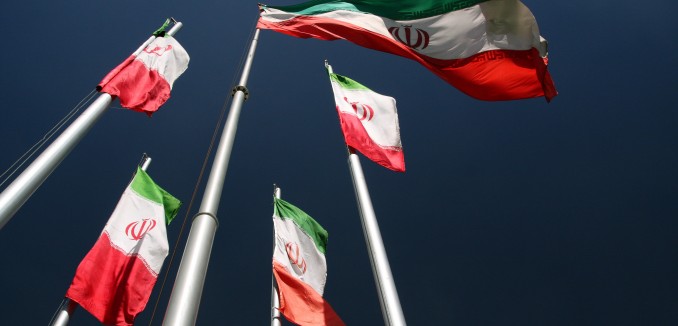This week, Iran hosted a private conference attended by Shiite and some Sunni Islamic militias from surrounding Arab states, the Al-Arab newspaper reported on Thursday (Arabic link).
Diplomatic sources in Tehran said that the conference was intended to rebuild Tehran’s alliance in the Middle East and develop ways to confront U.S. involvement in the region.
The conference was attended by representatives of Iraqi militias and Palestinian and Lebanese organizations affiliated with Tehran, including Hamas, Islamic Jihad, Hezbollah and the Iraqi Al-Da’awa Party. Iranian Revolutionary Guard commander Qassem Suleimani, who has relationships with these various groups, was the architect of the conference.
Some commentators in the Arab world believe that Iran wants to form an alliance to thwart a political solution in Syria, which would lead to the ouster of President Bashar al-Assad – the embattled dictator supported by Iran. Moreover, from military and security standpoints, Iran’s goal is to prevent the stabilization of the region and to thwart American efforts against ISIS in Syria and Iraq.
Although Iran is not involved in the international coalition fighting Islamic State of Iraq and Syria (ISIS), it is attempting to use the conflict to its advantage by taking over areas from which ISIS retreats by employing local Shiite militias. This can explain the growing presence of Suleimani himself in the combat zones in Iraq.
To date, Iranian leadership has sent hundreds of experts belonging to the Revolutionary Guards to Damascus to train the Syrian army, and is organizing Shiite militias to fight on behalf of the Assad regime. Thousands of fighters from the Iran-sponsored Hezbollah terrorist organization in Lebanon are also fighting in Syria on behalf of Assad.
At the same time, according to analysts, Iran is increasing its aid to Houthi rebels in Yemen to facilitate their ascent to power, open a path to the Red Sea and increase Shiite pressure on Saudi Arabia. Iran is trying to convince Arab powers that its cooperation is essential for regional stability.
In How Iraq Became a Proxy of the Islamic Republic of Iran, which was published in the December 2014 issue of The Tower Magazine, Jonathan Spyer and Aymenn Jawad Al-Tamimi identify the observation Iran made to make its involvement in Syria and Iraq successful.
The Iranians, however, spotted something different: On both sides, the number of men actually engaged in the fighting was relatively small. The Syrian civil war was one of small militias, not massive conventional armies. This meant that the establishment or insertion of a relatively modest number of committed men could make a major difference. In early 2013, under Iranian supervision, the number of Hezbollah fighters operating in Syria was increased. In tandem with this, the Iranians and Hezbollah began to train members of the Alawi paramilitary groups known as the Shabiha, which were reformed into a group called the National Defense Forces (NDF). …
In the summer of 2014, the army of another Iranian ally—the Iraqi government—faced a similar situation in regard to the Islamic State. At that time, a number of analysts predicted that the Iranians were likely to follow a similar strategy to that of Syria. It is now clear that Iran has pursued precisely such a policy, and with considerable success.
Almost immediately, Qassem Suleimani, commander of the Quds Force of the IRGC—the agency tasked with the creation and use of proxy political and military forces—was sent to Baghdad. Very clearly, his task was to coordinate the Iraqi response.
[Photo: yeowatzup / Flickr]




